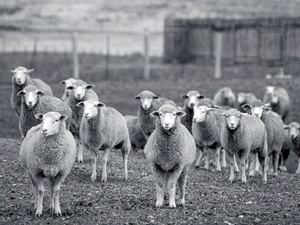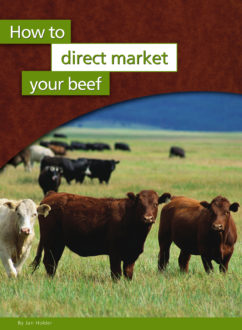
The easiest way to determine your price is to start with the cow and work your way to the consumer. It costs you x to make a 500- pound calf, x to finish it, x to process it, and x to store, transport, package and dis-tribute it. Once you know all that, you can simply add what you think is a fair profit. You may end up having to revise it, but at least you will know where your break-even point is. The point is to create a price and stick to it. You can count on folks trying to talk you down. Don’t take it personally. This is how the commodity game is played. However, don’t be afraid to turn some folks down because of price. You can’t be all things to all people, and there are plenty of other places a person can find cheap beef.
Items to be worked into your price:
- Cost of creating a saleable animal (labor, supplement, replacement cost, etc.)
- Land
- Finishing
- Transportation to slaughter facility
- Slaughter fee
- Processing
- Packaging
- Storage
- Transportation to retail
- Promotion
If you are still not sure that your prices are in line with what the customer will pay, go to a big natural foods store in the nearest thriving metropolis, and check out the prices. Write down the price of each cut, per pound, and compare them with yours. Figure that the retail price is about 30 per-cent higher than what the wholesaler sold it for. If they ask what the heck you’re doing, you can always say that you are planning a big shindig and are on a tight budget.
One mistake we made early on was not pricing our beef high enough. People didn’t perceive this as a bargain. They perceived our beef as inferior to beef that sold for a higher price. So we simply priced ourselves higher and made everyone happy.
Refer to Factors that Impact Your Bottom Line (p. 84) for more tips on pricing.
